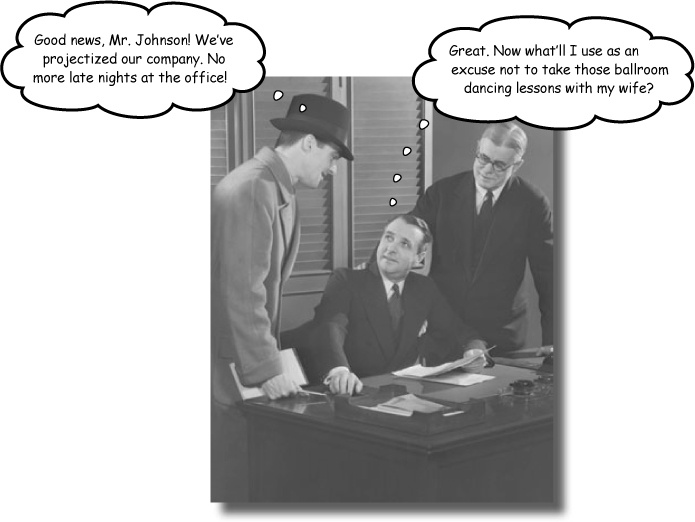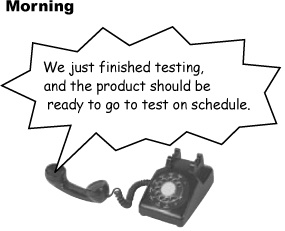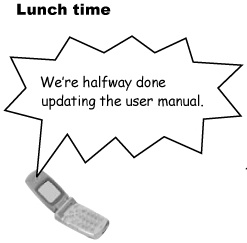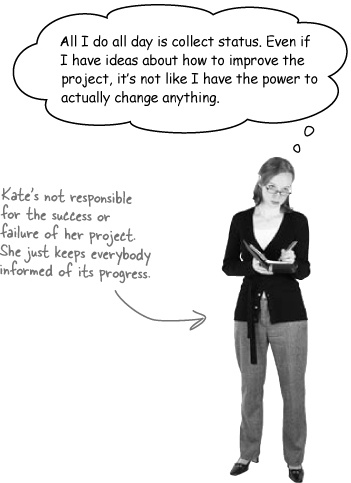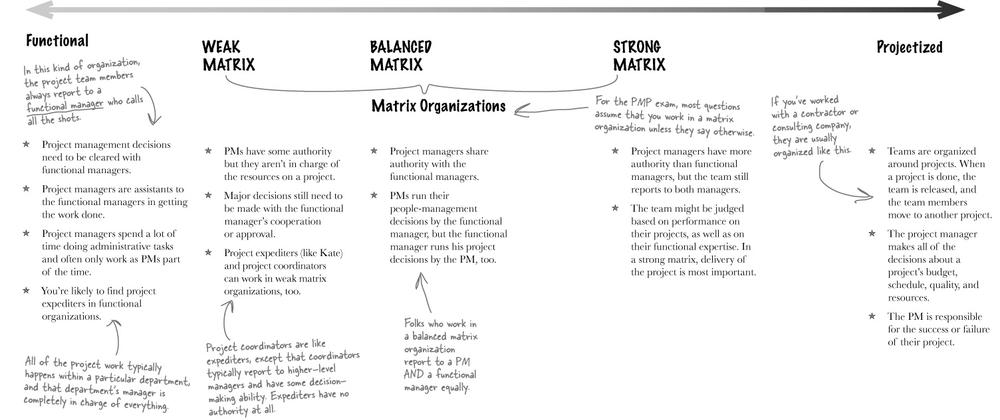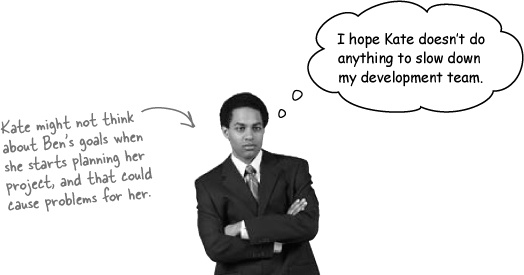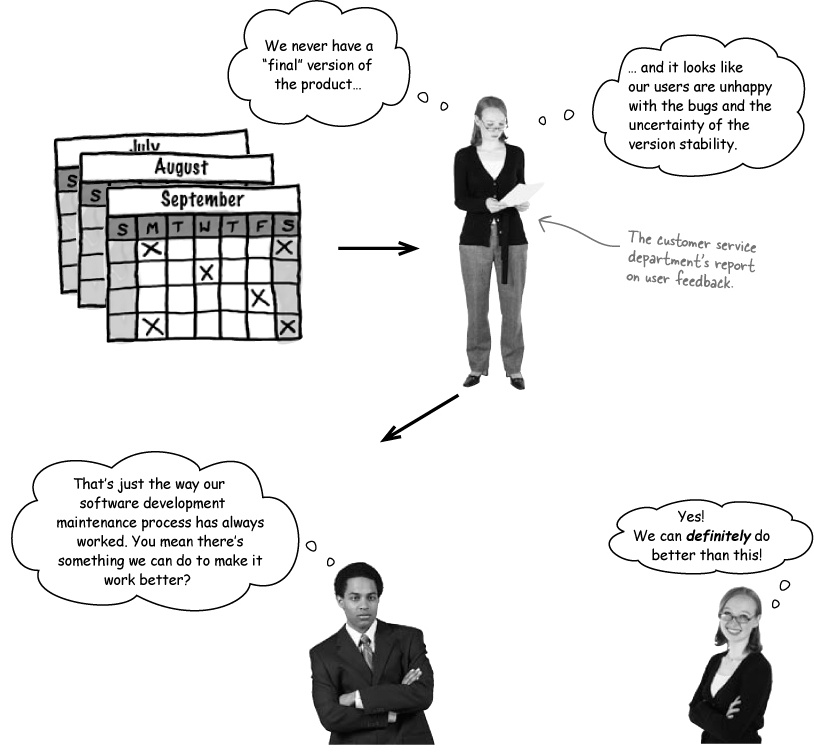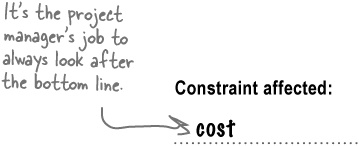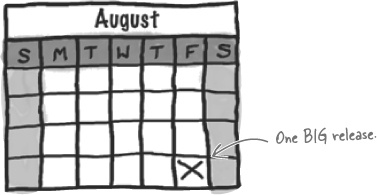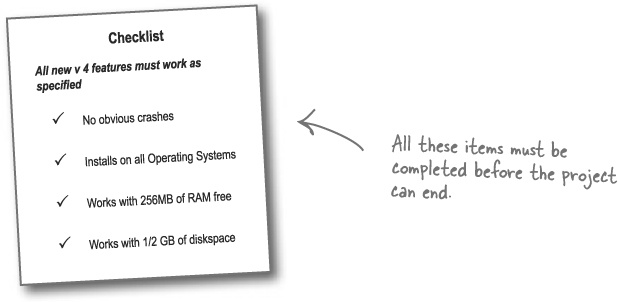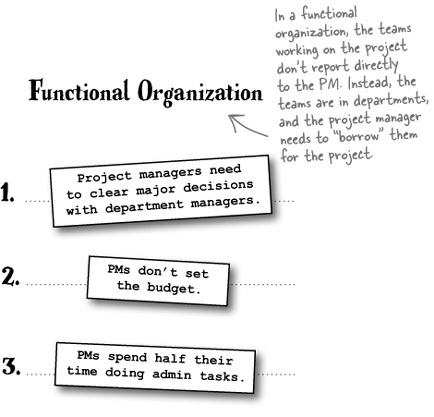Chapter 2. Organizations, constraints, and projects: In good company
If you want something done right... better hope you’re in the right kind of organization. All projects are about teamwork—but how your team works depends a lot on the type of organization you’re in. In this chapter, you’ll learn about the different types of organizations around—and which type you should look for the next time you need a new job.
A day in Kate’s life
Kate wants a new job
Now that’s she’s working on getting her PMP® certification, Kate’s learning a whole load of new skills. And she’s even started to look for a new job—one where she does more than write down what other people say all day...
Kate is a project expediter right now.
Kate may have the job title of “project manager,” but even though that’s what’s printed on her business cards, that’s not really her job. Kate’s job is to document what’s happening on a project, but she doesn’t have the authority to make decisions on it. The PMBOK® Guide calls this role a project expediter. She may work on projects, but she’s certainly not managing anything.
There are different types of organizations
Kate’s got three major options when looking at the kinds of organizations she can work for. Functional organizations are set up to give authority to functional managers, projectized organizations give it to the PM, and matrix organizations share responsibility and authority between the two.
This is just one way to think about it.
Most importantly, it’s the way that appears on the exam, so you’re going to need to know it.
Kate takes a new job
Kate: Hi, Ben. I’m excited to be here. It’s such a relief to be hired as a project manager, and not just a project expediter any more.
Ben: We’re excited too, since you’ll be taking care of our main software development project. It’s in maintenance mode right now.
Kate: Sounds great. How do we handle that here?
Ben: Well, we’re constantly getting business reports from the field, and when people think of new ideas, we just add them to the project.
Kate: Umm... So how do you know when you’re done?
Ben: We’re never really done; we try to release new versions as often as possible.
Kate’s being asked to do operational work
Kate’s spent a lot of time studying for the PMP exam, and the first thing she learned was that a project is temporary. When she sees ongoing work that doesn’t really have a start or a finish, it’s not a project at all. Ben asked Kate to do operational work, which has no beginning and has no end. Since there’s no way to for Kate to know when she’s done, it will be harder for her to be successful at her job. And that makes her nervous!
Stakeholders are impacted by your project
Anyone who will be affected by the outcome of your project is a stakeholder. It’s usually pretty easy to come up with the first few people on the list of affected people. The sponsor who’s paying for the project, the team who’s building it, and the people in management who gave the project the green light are all good examples. But it can get a little tricky as your project gets going. You might start with that core group of people and find that the number keeps growing as time goes on. As a project manager, it’s your job to find all of the stakeholders who are influential in your project and keep them updated on where your project is going. Making sure that their expectations are managed can be the difference between your project succeeding and failing.
Negative Stakeholders
Not all of the people you’re working with are rooting for your project to succeed. Sometimes, the people you’re working with think that your project might bring negative consequences for them. Ben’s worried that bringing any kind of planning into his company will slow down his team. Kate’s going to have to manage his expectations and work with him to set goals that make sense to him if she’s going to bring him around to supporting her work. You need to know what’s motivating all of your project stakeholders if you’re going to understand the influence they’ll have over your project.
Identify Stakeholders
One of the first things you’ll do when you start a project is figure out who your stakeholders are and write down their goals and expectations in a Stakeholder Register. That’s part of the Identify Stakeholders Process that you’ll learn more about in Chapter 10 of this book. Even though you do that work up front, you’ll find that new stakeholders are always popping up, and you’ll need to make changes to your Stakeholder Register to include them as you learn about them.
Note
You’ll learn more about how the Identify Stakeholders process helps you understand understand their goals and expectations in Chapter 10.
Back to Kate’s maintenance nightmare
Let’s figure out how things are working in Kate’s new organization... and start to think about how we can improve things.
Managing project constraints
When Kate thinks about solutions, she’s going to have to deal with the project’s constraints. Every project, regardless of what is being produced or who is doing the work, is affected by the constraints of time, scope, cost, quality, resources, and risk. These constraints have a special relationship with one another, because doing something to deal with one of the constraints always has an effect on the others.
Any time your project changes, you’ll need to know how that change affects all of the constraints.
For Kate’s project to succeed, she needs to think about the project constraints. If she doesn’t manage these six constraints at the same time, she’ll find that her project is either late, over budget, or unacceptable to her customers.
Note
These are the answers we thought fit best!
Did you get different answers? That’s okay! For this exercise, a good case can be made for almost any of the constraints. Don’t worry about which answer is “right” for now – it’s more important to get some practice thinking about projects in terms of constraints. And when you get to the actual exam questions, there will always be a clear, correct, BEST answer.
A stakeholder is anyone who is affected either positively or negatively by the cost, time, scope, resources, quality, or risks of your project.
Kate makes some changes...
She divides maintenance into releases, each with a well-defined start and a finish.
She works with stakeholders to set scope goals that each release must meet.
She manages the budget for each release and keeps the costs contained.

